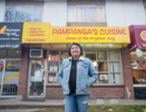As sports riots go, it’s a most unusual statistics package.
Of the 150 arrested or turned in to Vancouver Police on June 15 and the days that followed, the average age was 24.3 years old and 93.3 percent were male.
None charged so far and the three-month anniversary is rapidly approaching.
But we have reports. Three, count ‘em, three.
One that cost $313,000 and bears the name of VANOC chief executive John Furlong but is actually ghost-written by the husband of Premier Christy Clark’s top aide.
Another is a compilation from various city hall offices. And a third from the Vancouver Police.
The force’s Sept. 6 report claims it had no information from inside or outside sources that a riot was about to happen on June 15.
All three reports came to the same conclusion. Authorities were overwhelmed by 155,000 well lubricated, rabid hockey fans. But they don’t admit to haphazard planning.
“The crowds were massively larger than what was expected and the level of intoxication and general belligerence was higher than that seen in previous games,” said the VPD report. “The intense affinity for the Canucks (and many sports teams for that matter) is intertwined with a culture of drinking liquor or beer, and this is reflected in the promotions and advertising associated with sports.”
VPD wants more closed circuit TV cameras. In the London riots, it was useful for catching rioters and looters but proved once and for all that it fails as a tool of deterrence. VPD also wants airport-style security at transit stations, which could be both a logistical and financial nightmare.
TransLink is spending $100 million on fare gates and has no money to instal platform barriers to stop people from jumping or falling on tracks. How is it going to pay for high tech security devices?
The VPD report seems to contradict itself. On one page, it proclaims “Guests in Rogers Arena were not an issue,” but elsewhere, it says, “Further adding to the disorder, numerous ejections from Rogers Arena were noted, and a fire alarm went off at the arena with five minutes left in the game.”
The report fails to say how many fans were ejected, from which exit and what their next destination was.
How can a venue hosting the game everyone was watching on TV, only 400 metres away from where the riot was centred, go without scrutiny? Especially when that venue was the biggest bar in the city on June 15?
A key recommendation from the police? No more free-for-all fan zones.
“Do not have large scale public events with ‘festival seating/standing’ that concentrate large crowds of young persons – particularly the young ‘hooligan’ demographic – who have the propensity for public drinking in a small area. This creates problems in the crowds both inside and outside, especially when the entertainment is visible outside the venue (e.g., the City of Vancouver live site for the Stanley Cup); during the Olympics, such venues not only had high levels of security, they were shielded from outside viewing. Ticketing is one means of guaranteeing entrance for families, controlling capacity, and limiting overflow.”
All three reports fail to suggest the most logical venue for a future Stanley Cup viewing party: B.C. Place Stadium.
It’s costing taxpayers $563 million to renovate, mainly for a new retractable roof. It also includes 54,500 new seats and a giant, shoebox-style, centre-hung video board. The only one bigger in North America is in Cowboys Stadium in Texas.
We paid for it (not them), so we might as well use it next time.
Bob Mackin covered the Stanley Cup riot for the New York Times and writes about sports business and city hall politics for The Tyee and others.










What have we missed? What do you think? We want to know. Comment below. Keep in mind:
Do:
Do not: